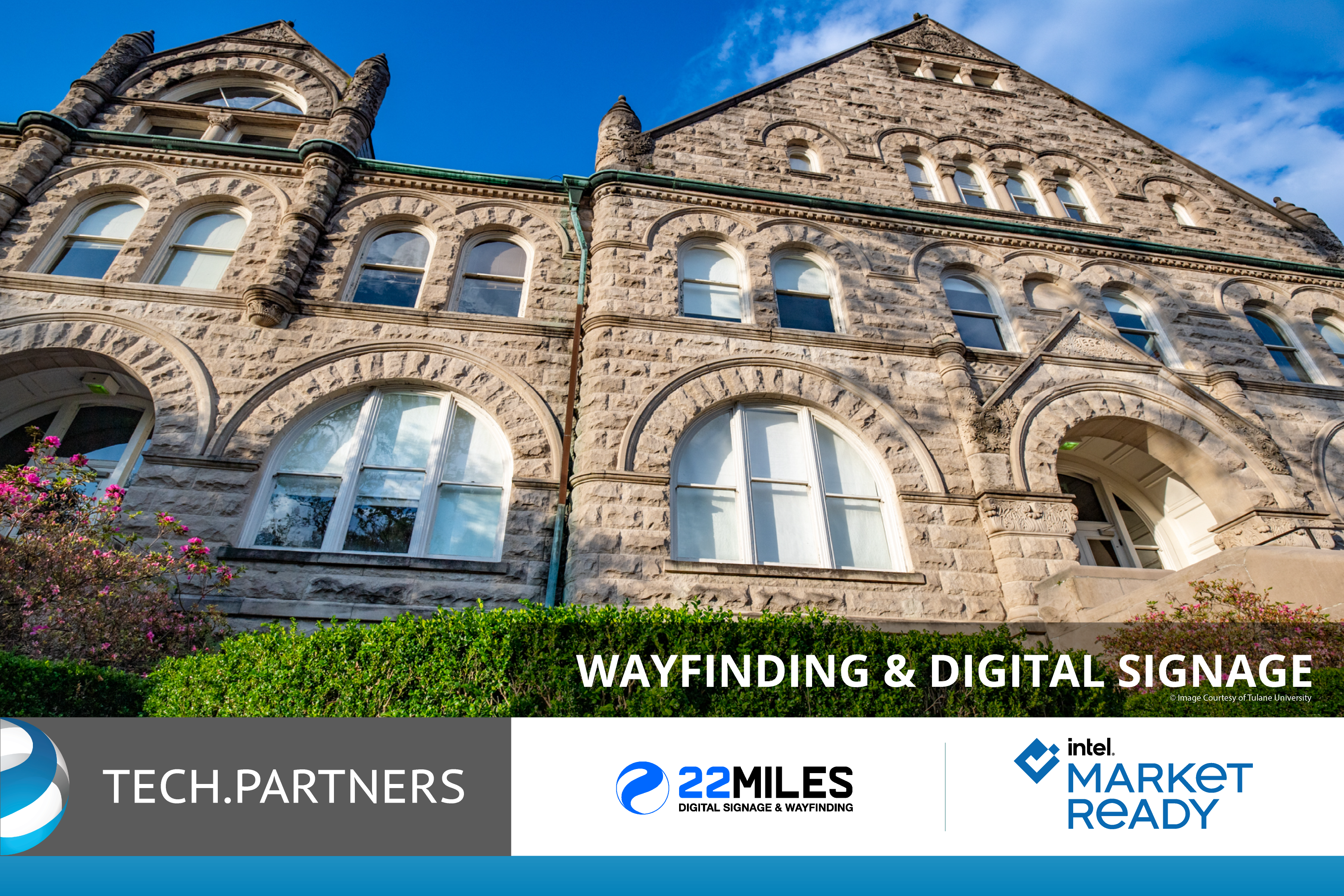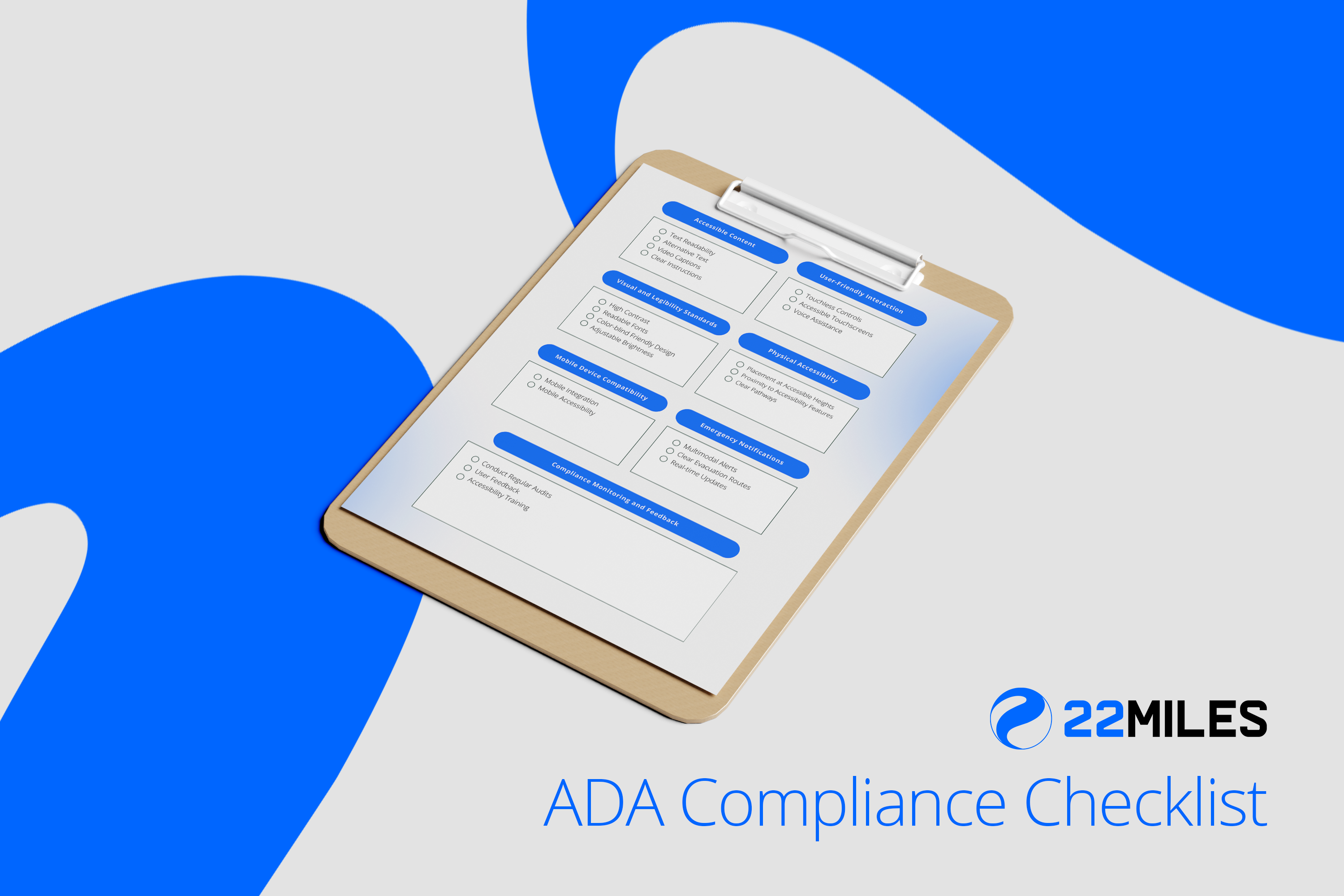September 19, 2024
Digital signage has become a game-changer for higher education institutions, enhancing communication and engagement across campuses. At Virginia Tech, 22Miles has played a pivotal role in transforming how information is shared and experienced. With 22Miles’ innovative digital signage solutions, the university has been able to break down silos and foster a more unified communication strategy.
This conversation with Rob Viers, the Director of Classroom AV Services and Digital Signage “Owner” at Virginia Tech, comes on the heels of his insights shared while discussing digital signage at the Getting the Most Out of Your Digital Signage CMS panel at InfoComm, where he highlighted the potential of content management systems in eliminating content workflow bottlenecks.
22Miles Content Specialist, Kayleigh Waters, sat down with Rob Viers to explore the initial steps institutions should take when considering digital signage implementation. We’ll also discuss the challenges faced in unifying campus content strategies and the innovative ways Virginia Tech has leveraged digital signage to enhance communication and engagement.
Digital Signage for Higher Ed Institutions: A Conversation with Rob Viers of Virginia Tech

Waters: What are the initial steps a higher education institution should take when considering the implementation of digital signage on their campus?
Viers: I would say the initial step is to ask around to multiple departments and colleges to develop a group/team to champion the initiative. You’ll find that everyone has a message they want to share and discovering common delivery methods will happen naturally. Treating it as a global initiative instead of trying to undertake it one department at a time will help tremendously and drive the overall cost down quite a bit. Reach out to other higher education institutions and discover what has worked for them and what hasn’t. Engage with vendors to discover if there is a cost-effective and purpose-built solution already available so you don’t have to recreate the wheel internally.
Waters: Many higher ed end users express frustrations over department siloes and unifying their campus content strategy. How has Virginia Tech overcome this?
Viers: Digital signage at Virginia Tech had traditionally been the “wild west”, where each group does their own thing and that has caused some issues in regards to adoption a more unified approach. Groups and individuals put a lot of work into the solution they were using and they are understandably prideful toward their efforts and resistant to others. If the collaboration would have happened, and been an option, at the onset, I think signage at Virginia Tech would have looked different.
The biggest push we’ve had toward a unified strategy recently comes from new buildings being developed and opened where departments and colleges are intended to cohabitate. This gives us a blank slate in regards to signage with the knowledge that all parties within the building need to share the signage opportunities available. It’s almost been “forced collaboration,” but it has progressed signage forward rapidly and has these same groups looking at similar options outside of the facility. I don’t think we’re where we need to be yet from a truly unified signage solution, but we’re on the right path.
Waters: What other challenges did you face during the implementation of digital signage at Virginia Tech, and how did you overcome them?
Viers: I feel like the main challenge we still have in front of us is getting signage embraced from a leadership perspective. I think the need for digital signage is understood, it’s just thought of as a departmental item instead of a university item. From a communication standpoint, Virginia Tech produces a wealth of content on a daily basis. We see it on the web and in the Daily Mail that’s emailed out. Virginia Tech has a ton of success in education, research, sports, the arts, and student life and there is a ton of content pointing to those successes…you just have to look for it. There are events happening around our campuses on a daily basis as well. I think if there was a dedicated group focused on embracing the power of digital signage, those elements would be easier to find as they could be shared across campus.
Waters: In the Getting the Most Out of Your Digital Signage CMS panel at InfoComm, you mentioned that a CMS is like a playground for end users like you. In what ways has Virginia Tech gotten creative with your digital signage?
Viers: Not nearly as creative as I’d hoped, to be honest. It’s taken some time to get people’s creative juices flowing when presented with the abundance of capabilities. In the facility we have 22Miles digital signage CMS running, the signage has been used on a daily basis for general information. The most interactive and successful elements have come from events though.
One of the most fun signage environments created, that I’ve experienced, is an all faculty meet and greet where they posted questions on the signage displays and you had to chat with people in the room to discover the answers. If you got so many answers, you were eligible for a door prize. There have been several admissions/recruitment events held as well where the signage has been adjusted to match the group visiting. In our next facility, the Innovation Campus in Alexandria, Virginia, we’ll be utilizing 22Miles for wayfinding and tying it into our scheduling solution so that people can locate conference and hoteling space easily. Once they find a suitable location, they’ll be able to scan a QR code to produce a digital map to their destination on their phone.
Waters: Can you share the key benefits that digital signage has brought to Virginia Tech’s campus, especially in terms of communication and student engagement?
Viers: With a large campus and student population, it’s difficult to reach everyone in regards to upcoming events. Through digital signage, departments and colleges are able to advertise events in key locations that will reach the most student population. This ensures that the events are well attended and enhances the student experiences. Keeping students aware of important academic closings and deadlines is another benefit.
Waters: How do you ensure the digital signage content remains relevant and engaging for the diverse audience on campus, including students, faculty, and visitors?
Viers: This can be tough in the “wild west” environment. For events on stand-alone systems, I know a lot of people utilize a separate calendar to remind them when to post and remove content. You’ll also see multiple dates used on a few graphics to encompass a range of time so less content manipulation is needed. With 22Miles, we’ve been utilizing the built-in scheduling to preset content for different events and introduce new content on a timely basis.
Waters: What advice would you give to another college that is just getting started with digital signage?
Viers: I’ll circle back to my first answer here…get ahead of it and put together a team/group to champion a solution. Definitely approach it as a university service where it can be a global hardware/software solution with the ability for the siloes to share content appropriately in their areas.
Embracing Higher Ed Digital Signage with 22Miles
In our discussion with Rob Viers, it’s clear that digital signage is not just a technological upgrade; it’s a transformative tool that can enhance communication and foster engagement across campuses. At Virginia Tech, the collaboration facilitated by 22Miles has begun to break down traditional silos, promoting a unified strategy that leverages the strengths of various departments.
Rob’s insights underscore the importance of taking a proactive approach to digital signage implementation—forming a dedicated team, learning from others, and viewing the initiative as a university-wide service. As Virginia Tech continues to innovate and adapt its digital signage solutions, it is a valuable case study for other higher education institutions looking to improve their communication strategies and enhance the overall student experience.
With the right tools and a collaborative mindset, digital signage can become a vibrant part of campus life, bridging gaps between departments, promoting ADA-compliance and inclusivity and unifying your content workflow. As we look to the future, it will be exciting to see how Virginia Tech and other institutions continue to harness the power of digital signage to foster a more connected and engaged academic community.
Interested in learning more about how to overcome department siloes and manage your school’s content workflow? Read our e-book.
Book a demo to get started today!




